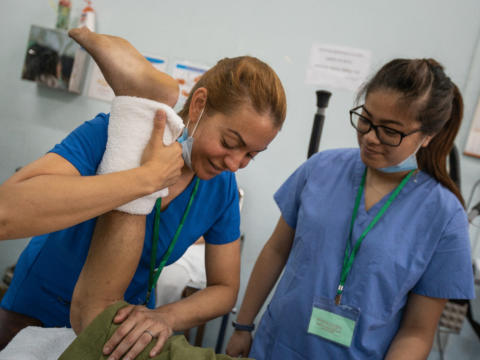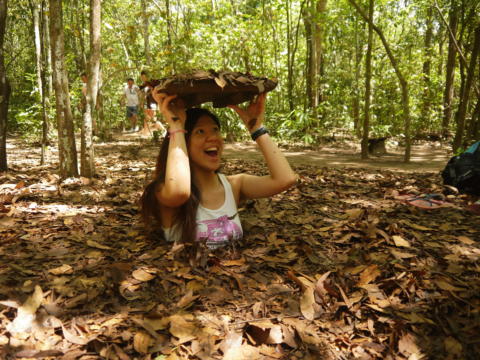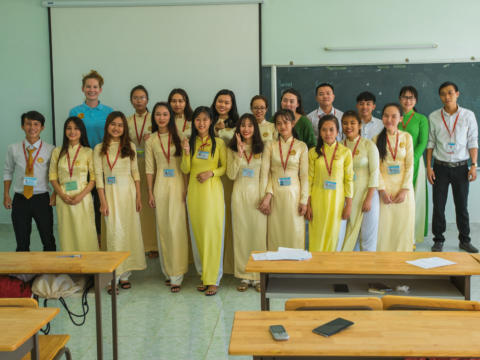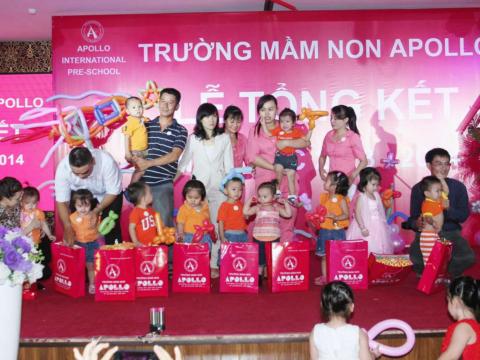Only 420€ per week!
Phan Thiet English Teaching
Phan Thiet - Vietnam
Use casual dialogue to teach English to college students and help them to improve, while getting to know more about them and their own unique culture.
Work with students your own age in the sunny beach town of Phan Thiet, who will be happy to meet and learn from you! As a native speaker or one with advanced level English, you will help students improve vocabulary, pronunciation and sentence building structure, as they practice with the use of basic, yet fun conversations.
Program Description
You will have an opportunity to teach English to students who attend the local university in Phan Thiet, which is a fishing village in southern Vietnam. The students you will work with range in age from 18-24 and are likely to be at a beginner level. Most are eager to improve their skills, since the importance of having knowledge of English is starting to grow. Your advanced language skills, diverse culture and clear pronunciations will be welcome here!
The main focus of your teaching will be to engage in introductory conversation and help them to improve their speaking ability. You will attend part of their normal English class for about 45 minutes as a guest-lecturer. The local staff will lay the foundation for grammar and basics. Your greatest contribution to the class will be helping them to formulate questions and answer them correctly, through the use of examples and leading them in conversation.
Vietnamese teachers will guide you in the process. One method is to invite you to write basic conversations on the board and practice the new material with the class. Another method is to have one-on-one conversations with a student in front of the class, which you regularly rotate. Since chatting is your main job there is very little preparation needed outside of the classroom. Your efforts will help students with their pronunciation and sentence building by relating real-life scenarios to the specific types of conversations that might surround them. You will regularly attend the classes and have maximum interaction with the students throughout the day.
At the beginner level, most topics of discussion include, age, hobbies, family and travel. You can share information about your culture, as you hear about theirs. As the students’ levels gradually progress, so will the topics advance. Practicing dialogue with them, will help students overcome their shyness and fear of public speaking, as they build confidence to use their new English skills.
Vietnamese students are generally very excited to meet people from other countries and welcome you to explore all aspects of their culture with them. It is very possible that you’ll have plenty of opportunities to spend evenings and free time on the weekends with some of the new friends you will make during your stay.
***Program is suspended during Tet – school holiday of 1 month (normally mid Jan to mid Feb) Also, During May – Oct the Program will continue but, participants may be teaching at a more rural location in a local English Center whenever University placement is not available.***
Aims & Objectives
- Help students improve their English language skills and employment opportunities
- Gain practical teaching experience, as you provide quality assistance to local staff
- Engage in an intercultural exchange, as you make new Vietnamese friends
Schedule
Monday
- Breakfast
- If this is your first week: Your first day eases you into the program and will be more introductory. In the morning you will be shown around the school and facilities, as you meet teachers and students you will be briefed on your role and tasks. This is a great opportunity for everyone to learn what you are comfortable with and how you can best assist the teaching staff. Students will also be able to ask you questions about yourself and maybe share some of the Vietnamese way of life with you too.
- Lunch
- Meet other classes and staff
- Dinner
Tuesday to Friday
- Breakfast
- Two classes of approximately 45 minutes each.
- Lunch
- Free time for relaxation or going to the beach
- Two classes of approximately 45 minutes each
- Dinner
- Free time
Note: This schedule can be changed and/or amended depending on weather conditions, local conditions and unforeseen circumstances.
Participant Criteria & Requirements
Standard Requirements
Minimum age: 15
Maximum age: –
Minimum English level: Advanced
CRB required: On Signup
Passport copy required: No
Resume copy required: No
Required qualification: None
Additional Requirements
There are no further requirements for this program.
Additional Equipment
Required
- Closed toed shoes (no flip flops allowed)
- Modest clothing – shoulders covered, long pants or skirts over the knees, on campus
Optional
- Ball
- You are more than welcome to bring teaching materials/resources for your class such as:
- Interesting board games
- Books/Comics
- Musical instruments
- Worksheets
- Cultural items of interest
- And anything else you think will help!
Location
Located in the Binh Thuan province along the coast in southeast Vietnam, Phan Thiet is a relatively undisturbed fishing town that is also the capital of the province. Here you will find all sorts of cultural sites, local markets and natural wonders to enjoy!
About the Accommodation
Located on the campus of Phan Thiet University, our accommodation has a very comfortable setting. Rooms for up to 6 participants, are well equipped with air conditioning, fans, hot water and private bathrooms in each. There are separate rooms for male and female participants.
WiFi is available for use in specified locations throughout the accommodation. Please note that the quality of internet access will depend on local weather conditions. Since we are in Southeast Asia, we might have poor internet accessibility at times due to heavy rain.
Food Arrangements
Three meals a day during the week (breakfast, lunch and dinner), two meals (brunch and dinner) on weekends will be served at the accommodation. The food will be typically Vietnamese cooked by locals and using local ingredients. Occasionally there may be some Western dishes served. When necessary, lunch may be provided near the placement location to long travel back and forth to the accommodation.
Facilities
The bus stops right in front of the Phan Thiet University. You can use the bus to travel to the beach (about 5 minutes away), the tourist area (about 15 minutes away), where you can find restaurants, bars, banks, supermarkets, shopping centers, pharmacies, and the hospital (also about 15 minutes away).
Activities & Events
No scheduled activities outside the program.
Sights & Surroundings
In your off time you may want to explore some of the natural and historic sites in the area. These include:
White Sand Dunes
Scenic desert area where ATV and other activities are possible.
Red Sand Dunes
Sand sledding is very popular at this desert location.
Mui Ne Beach
Very close and accessible by public transportation. Many activities including swimming and chilling.
Mui Ne Harbor
Very close and accessible. Activities here include fishing and Kite surfing.
Ta Cu Mountain/Linh Son Truong Tho Pagoda
Lush location 28 km from Phan Thiet, where you will enjoy the natural landscape, limestone caves and ornate Buddhist structures.Save yourself some of the hike by using the cable car too!
Fairy Stream – Suoi Tien
Photography hotspot just 18 km from Phan Thiet.
Po Sah Inu Towers
Ancient site with towers from the 18th century. Only 6 km outside of Phan Thiet.
Transportation
From this location we provide free transport to your next program at the following location(s):
- Ho Chi Minh
- Mekong Delta
Quick Facts
Name: Socialist Republic of Vietnam
Population: 92 million
Capital: Hanoi
Language: Vietnamese
Currency: Vietnamese dong (VND)
Time zone: UTC +7
Country Information
Vietnam is currently the world’s 13th most populous country and occupies 331,211 square kilometers. Today, although scarred by its past, Vietnam is a fast-growing economy helped by tourism that its interesting history and beautiful sights draw in.
One frequent thing to hear is that it has not yet been subjected to the western influence that Thailand and, to an extent, Cambodia have been. The Vietnamese still tend to prefer their traditional cuisine to the fast food chains that seem to be taking over the world.
Aside from the beautiful countryside of the north, rice fields and beaches, Vietnam is a country that is very much on the move. Roads are being upgraded, new hotels are opening everywhere and its cities are fastly developing.
Climate
Due to the country’s land mass, its climate varies from region to region. On average, temperatures range from 22-27°C year-round with a generally warm and humid climate. Although temperatures don’t vary much in the southern parts of Vietnam, the northern areas can get quite cold during the winter.
Tropical monsoons can be expected between October and April in the centre of Vietnam and from May to September in the north and south. Outside of these rainy seasons it remains almost completely dry.
Culture
Although Vietnamese culture is rooted in the ancient indigenous Dong Son culture with wet rice agriculture as its economic foundation, certain aspects of its culture have Chinese influence. In more recent times, the country has been exposed to Southeast Asian, European and American culture as well as their media.
Having said this, it is safe to say that Vietnam has not yet absorbed as much western culture when compared to some of its neighbours.
Gastronomy
Vietnamese cuisine is heavily influenced by the Asian principle of 5 elements which correspond to the five elements: wood (sour), fire (bitter), earth (sweet), metal (spicy) and water (salty). This yin and yang principle is an art of balance to make food beneficial to the body.
Traditional Vietnamese cooking is known for its fresh ingredients, minimal use of oil, plentiful use of herbs and vegetables and what’s more, it is considered one of the healthiest cuisines worldwide.
Typical dishes might include rice vermicelli noodles, jasmine rice, dried shrimp, fish sauce, hoisin sauce, sesame seeds, and bean sprouts to name a few!
Transportation
There are plenty of transport options in Vietnam and it is, on the whole, fairly cheap to move around.
Air travel
Vietnam has 21 airports. Prices do vary depending on when flights are booked, but it is still a cheap option and the best way to travel quickly over long distances.
Bus
A common way to travel for longer distances (locally, taxis are usually the preferred option). You should try and buy tickets from the bus stations where possible as the price will be fixed and reasonable. If tickets are bought during the journey, you run the risk of being overcharged.
Taxi
Taxis are mostly metered and very cheap. They are the most popular way to get around in the towns/cities especially when carrying luggage!
Rickshaw (Cyclo)
Practical way of getting around but not so effective with luggage. You will need to bargain a price beforehand.
Motorbike taxi (Xe Om)
Similar to the Cyclos. Make sure to set a price beforehand to avoid being overcharged.





